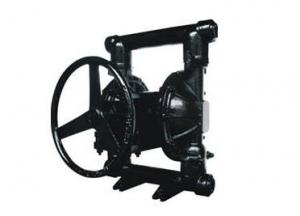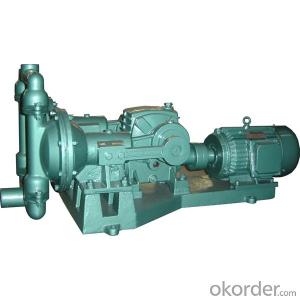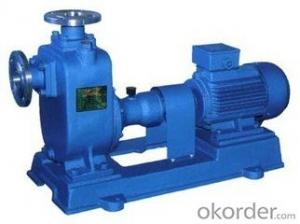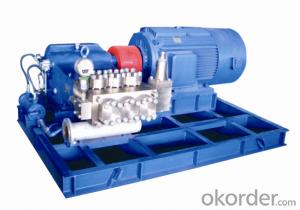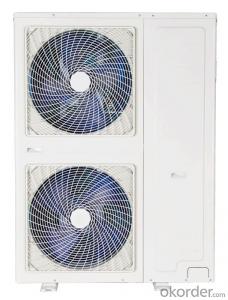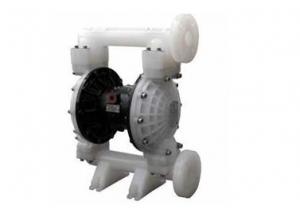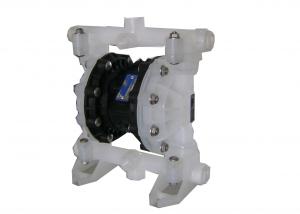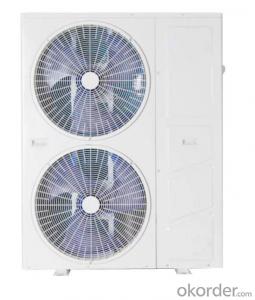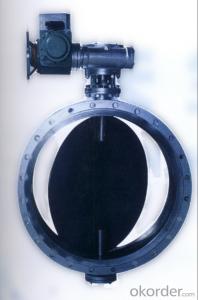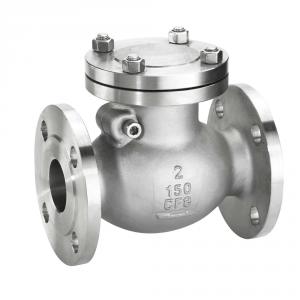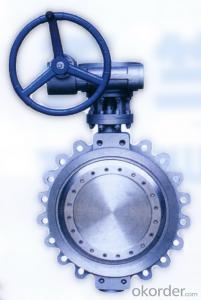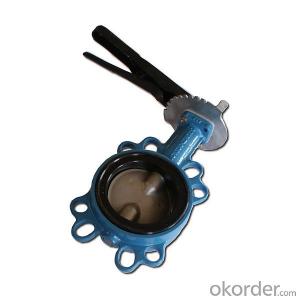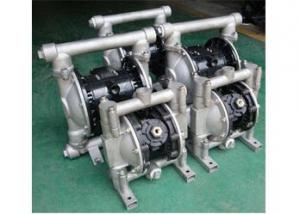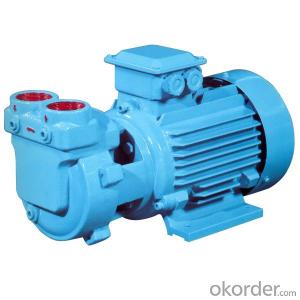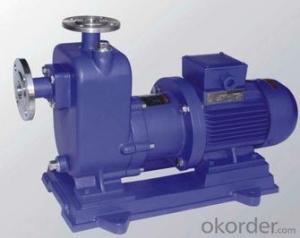Cast Iron Pneumatic Diaphragm Pump
- Loading Port:
- China Main Port
- Payment Terms:
- TT or LC
- Min Order Qty:
- 1 unit unit
- Supply Capability:
- 1000 Per Month unit/month
OKorder Service Pledge
OKorder Financial Service
You Might Also Like
Details for Cast Iron Pneumatic Diaphram Pump
1, Package and delivery of Powder Diaphram Pump
1) Packed with standard exporting wooden case, requested package will be acceptable.
2) Delivery date will be within 30 days after receiving the prepayment.
2, Technical specification of Cast Iron Pneumatic Diaphram Pump
|
Working Principle: |
Double Diaphragms |
|
Main applications: |
Oil, Water, Chemical, Foodstuff, etc. |
|
Driver: |
Air operated (Penumatic) |
|
Power Specs: |
380/415 V 3phase; 50hz/60hz etc. |
|
Max. permissible fluid temperature: |
150°C |
|
Type of connection: |
Flange, Thread, Quick Coupled. |
|
Installation position: |
Connect to compressor |
|
Casing/Inner parts material: |
C.I, S.S, PP, Aluminium /PP, PTFE, PVDF. |
|
Shaft seal type: |
O-rings in pump |
|
Free passage: |
3mm-10mm |
|
Maximum viscosity: |
5X104CST |
|
Maximum drive rating: |
0.2-0.7mpa (2-7bar) |
|
Maximum caliber: |
4 inch (100mm) |
|
Maximum dischrage head: |
0.5mpa (5bar) |
|
Flow rate range: |
0.8-40 m³/h (13.3-667l/m) |
3, Model details about Cast Iron Pneumatic Diaphram Pump
|
|
PDP-8 |
PDP-10/15 |
PDP-20/25 |
PDP-25A |
PDP-32/40 |
PDP-50/65 |
PDP-80/100 |
PDP-125 |
|
Caliber ( mm) |
8 |
10/15 |
20/25 |
25 |
32/40 |
50/65 |
80/100 |
125 |
|
Fluid flow ( m³/h) |
0~1 |
0~1 |
0~3 |
0~7 |
0~9 |
0~21 |
0~34 |
0~60 |
|
Pressure ( bar) |
7 |
7 |
7 |
8.4 |
8.4 |
8.4 |
8.4 |
8.4 |
|
Head ( m) |
50 |
50 |
70 |
70 |
70 |
70 |
70 |
70 |
|
MAX. air consumption ( scfm) |
9.0 |
9.0 |
28 |
60 |
60 |
125 |
175 |
325 |
4, The advantages about our Cast Iron Pneumatic Diaphram Pump
1) Four bolts connection with very round ball, well seal and good dry suction. The actual dry suction can reach to 4~7m.
2) High roundness valve ball for use the ball mill machine.
3) Three section manifold, Flexible installation and even can simultaneously convey two different liquids.
4) Longer diaphragm life. Diaphragm material from Dopont, Exxon.
5) Pilot type air valve, low maintenance, low air consumption, so the using cost is low.
6) Wetted body: PPH, PVDF, SS304, SS316, Aluminum etc.
7) Diaphragm: PTFE, Hytrel, Santoprene, Viton etc.
- Q:Can an air pump be used for fish tanks?
- An air pump is capable of being utilized for fish tanks. In reality, it is an exceedingly prevalent and indispensable accessory for fish tanks. The air pump serves the purpose of aerating the water through the generation of bubbles, thus augmenting the oxygen levels within the tank. This is specifically crucial for fish species that necessitate high levels of oxygen, such as certain tropical or saltwater fish. Furthermore, the bubbles produced by the air pump also aid in circulating the water, averting it from becoming stagnant and promoting superior overall water quality. Consequently, if you possess a fish tank, it would be highly advisable to invest in an air pump to guarantee the health and well-being of your fish.
- Q:How to troubleshoot an air pump that is not working?
- In the event that your air pump is not functioning, there are several troubleshooting measures you can take to identify and rectify the problem. Here is a step-by-step guide to assist you in troubleshooting the issue: 1. Ensure the power source is working: Verify that the air pump is correctly plugged into a functioning electrical outlet or that the batteries are properly installed and not depleted. If using an electrical outlet, attempt to connect another device to the same outlet to determine if it is operational. 2. Examine the power switch: Confirm that the power switch on the air pump is switched on. Some models have a separate power switch, while others activate when the air pressure is adjusted. If necessary, consult the user manual to locate and correctly operate the power switch. 3. Inspect the air tubing and connections: Check for any kinks, blockages, or leaks in the air tubing or connections. Ensure that the tubing is securely connected to both the air pump and the intended device it is supplying air to. If any issues are detected, replace or repair the tubing accordingly. 4. Clean the air intake filter: The air intake filter prevents dust and debris from entering the air pump. If the filter becomes clogged, it can impede airflow and cause the pump to malfunction. Remove the filter, clean it following the manufacturer's instructions, and reinstall it. 5. Check for mechanical obstructions: Thoroughly examine the pump's impeller or diaphragm to ensure they are free from any obstructions or damage. Remove any debris or foreign objects that may be hindering proper operation. 6. Verify the pressure adjustments: If your air pump allows for pressure adjustments, ensure that they are set correctly. Consult the user manual to understand how to adjust the pressure levels to suit your specific requirements. 7. Test with an alternative air stone or device: If feasible, attempt to connect the air pump to a different air stone or device to determine whether the issue lies with the pump itself or the original equipment. Sometimes, a faulty air stone or device can interfere with the proper functioning of the air pump. 8. Seek assistance from the manufacturer or a professional: If none of the aforementioned steps resolve the issue, it may be necessary to contact the manufacturer's customer support or consult a professional for further assistance or potential repairs. Always prioritize your safety when troubleshooting electrical equipment. If you are uncertain or uncomfortable with the troubleshooting process, it is advisable to seek professional assistance to avoid any potential risks.
- Q:How does an air pump handle different nozzle sizes?
- An air pump typically handles different nozzle sizes by providing a variety of attachments or adapters. These attachments allow the pump to connect securely to different nozzle sizes and ensure a proper seal, enabling efficient inflation or deflation of various objects such as tires, balls, or inflatable products.
- Q:Can an air pump be used with different types of valves?
- Yes, an air pump can be used with different types of valves. Most air pumps come with various nozzle attachments that can fit different types of valves, including those commonly found on bicycle tires, inflatable toys, sports equipment, and air mattresses. These nozzle attachments are designed to create a secure and airtight connection with the valve, allowing the pump to efficiently inflate the desired item. Some air pumps may also have adjustable valve adapters or interchangeable fittings to accommodate different valve types. Thus, whether it's a Presta valve, Schrader valve, or a different type of valve, an air pump can typically be used with different valves by using the appropriate nozzle attachment or adapter.
- Q:How portable is an air pump?
- An air pump is highly portable as it is typically small, lightweight, and designed for easy transportation.
- Q:What is the maximum weight an air pump can handle?
- The maximum weight that an air pump can handle is determined by various factors, including the design, capacity, and specifications of the specific air pump. Air pumps are primarily used for inflating and maintaining the pressure of objects like tires, air mattresses, and sports equipment. Although they are not typically designed for heavy lifting or weight-bearing tasks, they do have a certain weight capacity based on their intended use and capabilities. Household air pumps usually have a maximum pressure capacity, which is measured in pounds per square inch (PSI) or bar. This capacity indicates the maximum pressure the air pump can generate and indirectly affects the weight it can handle. However, it's important to note that weight and pressure are not directly proportional since pressure is spread over the surface area of an object. For instance, an air pump designed for car tires may have a maximum pressure capacity of 150 PSI. The weight it can handle depends on the size and surface area of the object being inflated. In the case of a car tire, the weight it can support is determined by the tire's load rating, as specified by the tire manufacturer. In general, air pumps are not suitable for lifting or supporting heavy weights. If you need a device for heavy lifting or weight-bearing tasks, it is recommended to use specialized equipment like hydraulic jacks, cranes, or hoists that are specifically designed for those purposes and have clearly defined weight capacities.
- Q:Can an air pump be used for powering airbrushes?
- Yes, an air pump can be used for powering airbrushes. Airbrushes require a constant supply of compressed air to operate, and an air pump can generate the necessary pressure. Air pumps are commonly used for powering airbrushes in various applications such as painting, cake decorating, and body art. They provide a consistent and reliable source of compressed air, allowing for precise control and fine detailing. However, it is important to ensure that the air pump is capable of delivering the required air pressure and volume for the specific airbrush being used. Different airbrush models may have different air pressure requirements, so it is essential to match the air pump's capabilities with the airbrush's specifications to ensure optimal performance.
- Q:Can an air pump be used for inflatable snow globes?
- Using an air pump for inflatable snow globes is not possible. These snow globes necessitate a unique pump called a snow globe inflator, specifically designed to inflate and maintain air pressure within the globe safely. Using an air pump could potentially harm or burst the snow globe because regular air pumps generate excessively high air pressure for the fragile materials employed in inflatable snow globes. It is always advised to use the designated equipment for each inflatable product to guarantee safety and durability.
- Q:How does an air pump help in maintaining water quality in aquariums?
- An air pump helps in maintaining water quality in aquariums by providing aeration and circulation. It pumps air into the water, promoting oxygen exchange and preventing the water from becoming stagnant. This helps to oxygenate the water, which is crucial for the well-being of fish and other aquatic organisms. Additionally, the movement created by the air pump aids in distributing heat and nutrients evenly throughout the tank, reducing the risk of dead zones and promoting a healthier environment for the aquarium inhabitants.
- Q:How does an air pump handle back pressure during inflation?
- An air pump handles back pressure during inflation by utilizing a combination of design features and mechanisms. When an air pump is connected to an inflatable object, such as a balloon or a tire, and pressure is applied to the pump, the air is forced into the object, causing it to inflate. However, during this process, back pressure can occur, which is the resistance or counterforce exerted by the object being inflated. To handle back pressure, air pumps are designed with specific components and features. One common feature is a one-way valve, also known as a check valve, which allows air to flow in only one direction. This valve prevents backflow of air from the object being inflated back into the pump, ensuring that the air only moves in the desired direction. Additionally, air pumps may incorporate pressure relief valves or pressure regulators. These mechanisms help control the pressure by releasing excess air when the pressure inside the object reaches a certain level. This prevents overinflation and potential damage to the object being inflated. Furthermore, the design of the pump's piston or diaphragm plays a crucial role in handling back pressure. These components are engineered to create a tight seal when pressure is applied, ensuring minimal air leakage and maximizing the efficiency of the inflation process. The materials used in constructing the pump, such as rubber or other flexible materials, help provide a secure seal and reduce the effects of back pressure. Overall, air pumps are designed to effectively handle back pressure during inflation by incorporating one-way valves, pressure relief valves, and well-designed pistons or diaphragms. These features work together to ensure a smooth and efficient inflation process while preventing damage to the pump and the object being inflated.
1. Manufacturer Overview |
|
|---|---|
| Location | Shanghai,China |
| Year Established | 2009 |
| Annual Output Value | |
| Main Markets | |
| Company Certifications | ISO9001-2008;ISO90012001 |
2. Manufacturer Certificates |
|
|---|---|
| a) Certification Name | |
| Range | |
| Reference | |
| Validity Period | |
3. Manufacturer Capability |
|
|---|---|
| a)Trade Capacity | |
| Nearest Port | |
| Export Percentage | |
| No.of Employees in Trade Department | |
| Language Spoken: | |
| b)Factory Information | |
| Factory Size: | |
| No. of Production Lines | |
| Contract Manufacturing | |
| Product Price Range | |
Send your message to us
Cast Iron Pneumatic Diaphragm Pump
- Loading Port:
- China Main Port
- Payment Terms:
- TT or LC
- Min Order Qty:
- 1 unit unit
- Supply Capability:
- 1000 Per Month unit/month
OKorder Service Pledge
OKorder Financial Service
Similar products
New products
Hot products
Related keywords




